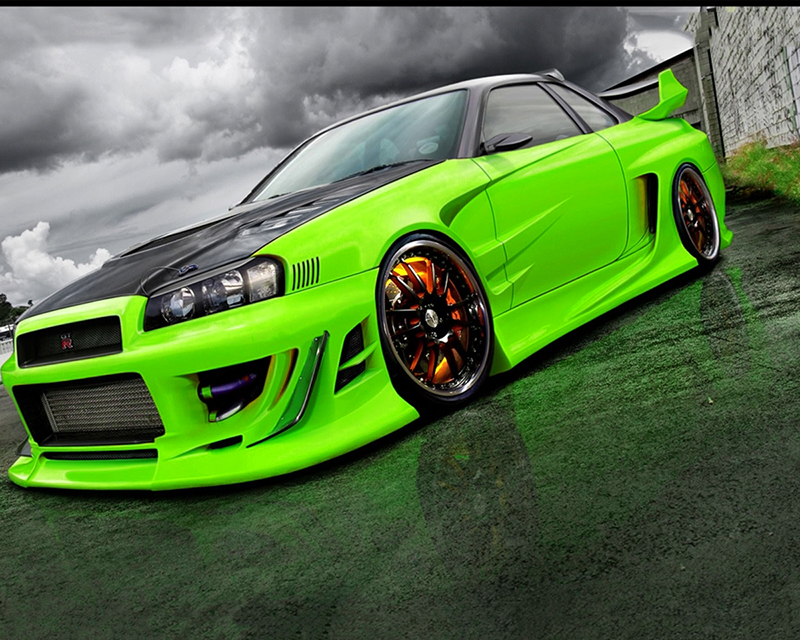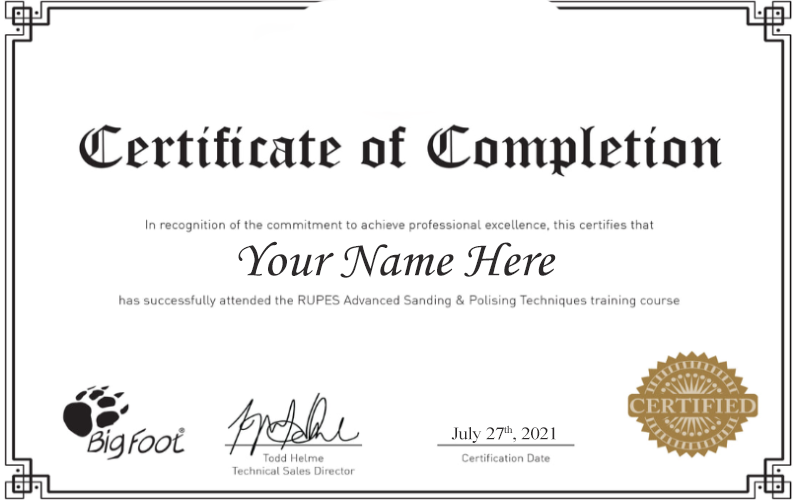Do’s and Don’ts for Car Modding
Real car enthusiasts are very rarely happy with the stock specification of any car. Even if they were to buy a higher trim of car, they would still likely have things about it that they would change — paint job, wheels, exhaust, cold air intake, engine tuning and much more.
Regardless of what modifications you are planning to make, there are a number of important things to think about first. It’s not just a question of slapping on a new component or ripping out some other component. Today’s article is designed to help you think through the mods you’re thinking of applying to your car.
The Car Modding Industry
Car “modding” is an informal name for what is essentially a titanic global market known as the automotive aftermarket. In 2019 its size was estimated as $378.4 billion, and that’s expected to grow to $390.1 billion in 2020. That’s a lot of people going out of their way to switch out their OEM parts for new ones. The main factor behind it phenomenal size and scale is growth in the number of channels through which people can acquire these parts.
Traditionally, a car modder would head to a junk yard or specialist local dealer to find the specific parts they needed. For years, even after the Internet began to take hold in our lives, these were the only places where one could be assured of getting genuine, quality aftermarket components for use on a car modification project.
Nowadays, of course, it’s so much easier. The explosion of one-stop aftermarket shops online, coupled with fast overnight delivery for many parts, or convenient pickup for those who can’t accept direct delivery, have made the process of modding more efficient and streamlined than ever before.
Car Modding Do’s and Don’ts
The following are tips for things to think about or do before you begin your car modding journey. Some are too keen to rush into the process without properly thinking everything through. Hopefully this will keep you on a productive and successful track:
Do’s
1. Make a Plan
One of the common mistakes that drivers make is purchasing aftermarket parts one by one without considering how they work together. If you think of your car in terms of individual parts, you can quickly and easily put together what you suppose would be the ideal modified setup.
Reality is quite different, however, as you discover when you realize that your future choice of parts becomes restricted depending on whatever you’re buying right now to mod the car. If you purchase aftermarket parts to boost horsepower, for example, then you are also going to have to think about when and how you’re going to tune your engine to allow that increase to happen effectively. In short, you need to make a plan and think ahead.
2. Check the Warranty
There’s a common belief among the modding community that any sort of modification will void the car’s warranty. There is some truth to this idea, but it’s certainly not as dramatic or automatic as some people make out. A warranty will only be voided if the automaker determines that any modification you made caused the need for repair.
A standard warranty guarantees individual parts and systems against defect or breakage when used under normal conditions. If a component under warranty suddenly has a problem, then the manufacturer has your back. While adding new components to the system doesn’t directly void that warranty, you have to consider what might happen down the line.
For example, let’s say that you switch out the exhaust on your new car for something more guttural with a more pleasing sound. If later on your radiator starts leaking, or there’s some other component in the engine that has a problem, then your warranty should still be valid. There’s little chance of them proving a causal link between installing that exhaust and your radiator leaking.
Therefore, the more comprehensively you plan to modify your car, the greater you overall chances of the manufacturer not honoring the warranty. If they have good reason to believe that any modification you have made has led to the need for repairs — even in part — then they may attempt to escape the warranty obligations. That would leave you stuck with the bill.
3. Ask: “Will this Mod Affect My Car’s Roadworthiness?”
Besides the warranty, whether or not your car will be roadworthy after modding is another important question. Beyond simply presenting a financial risk by voiding the warranty, there are some modifications that you might make that render your car illegal for driving on public roads. Specific rules on cars vary from state to state, so you should ensure that you are aware of any rules that apply to cars in your home state or local area. Some examples include (but are not limited to):
- Window tints
- Overly loud exhausts (usually exceeding 90-95 decibels measured from 50 feet)
- Colorful customized neon lights (while driving) and colored headlights
- Lifting the suspension too high (e.g. in Georgia, a max of 2” increase is allowed)
- Nitrous oxide systems – some states keep records of people purchasing nitrous oxide, and/or ask buyers to sign declarations saying they know it’s illegal for cars
- Radar/laser jammers
- Uncertified cold-air intake (California)
As we mention above, rules do vary greatly from state to state, but it’s very unusual for a state to have zero rules. Therefore, it’s a prudent step to check out how each of the mods you are planning squares up with the local laws.
4. Keep Your Original Parts
Have you thought about what you’re going to do with your OEM parts? You might have considered selling them, which on the surface seems like a good idea. In reality, however, you should make plans to hold on to any OEM parts that you have after modifying your car.
Why do we say this? Picture the scene some time down the line. You’ve had fun with your car, modifying it and customizing it, but now you want to sell it and move on to a different model. The car you have now is a product of your own personal tastes, and therefore has become extremely “niche” in the world of sales.
If you think another modification enthusiast would take that car from you, think again. They want a stock car to work on, customize and personalize for themselves. Keeping and refitting your OEM parts for resale is the best way to ensure a smooth sale, and possibly maximize the value. If those OEM parts are largely unused, then they have retained more of their overall value.
5. Join a Community
When you’re looking around the giant marketplace of aftermarket parts, it’s easy to be taken in by hype and marketing. Before you embark on your modification quest, take the time to join an online group for car modding. There may be one specific to your make and model of car. You don’t have to do anything the group says, but their experience, insight and advice should probe invaluable as you set out to modify your own car.
So, get on Facebook, Instagram and other social media platforms; ask members about specific products or modification ideas. Wondering about “grey area” modifications that may not be technically illegal, but still cause problems with police? Trying to decide between two similar components of different brands? This is where community feedback is valuable.
6. Shop Around
Finally, in this section, we advise drivers to never take a car modding item at face value from a single supplier, no matter how big they are. The online shopping experience makes it easy to explore the marketplace efficiently to see where might have the same product at a better price. Many suppliers have sales or discount events, some marking a traditional sales event like Black Friday, but others perhaps because they are overstocked or because they are promoting a specific brand for a limited time.
Your car is a depreciating asset. If you can make some savings here and there without compromising on quality, then it’s worth putting in a little extra time to explore all the options. You’ll be glad you made those decisions if and when the day comes where you want to sell the car.
Don’ts
1. Start Modding Straight Away
This is a common rookie mistake. Any experienced car modder will advise you to use your car for up to a month in its stock form before you begin to make changes. This advice is equally true for new cars as it is for pre-owned cars.
With new cars, there is always a “breaking-in period” where you are getting used to the car, how it drives and functions. It’s a bad idea to do any modding before you’ve become more accustomed to driving it. How else will you know exactly what you want to mod? Beyond that, how will you know if your mods have made a difference to anything?
Now, you might wonder why a new car would need a “breaking-in period,” but in fact that’s not the reason you should drive it a while first. The first month or so of driving is so you can determine what (if any) are the potential problems with the vehicle. Even if you’ve had the car inspected, there’s always a chance of something being missed, or a problem arising suddenly that wouldn’t in a new car.
For all these reasons, however old your car is, test it properly for at least a month before you start making any modifications.
2. Assume All Mods Increase Value
As we mention above, there are some who may believe that modifying their car will help to retain its resale value down the line. The car and its parts, however, continue to be a depreciating asset overall, and some modifications could actually be detrimental to the selling price. If the buyer only values OEM parts and the original specification with the car, then your modified car is worth less in their eyes. To take it would mean a lot of restorative work, thus reducing their offer.
3. Believe All Product Claims
Sellers of aftermarket products will often make big claims about their product. For instance, they may promise that this new air intake system will deliver an additional 25hp. They may use clever words like “can” instead of “will,” and “up to” as a way of avoiding complaints when the real boost isn’t anywhere near 25hp. The product you have may well be able to add 25hp, but only when done with a specific engine tuning and on certain models of car. If you knew all that, however, you might not buy it. Always be aware of marketing hype surrounding aftermarket products, consult your community and try to find reviews and feedback from users who have already bought the product.
Car Modding: Don’t Be Hasty
In the end, arguably the most important lesson when modifying a stock car is to do it carefully and in a considered way. It’s easy to be taken in by the powerful advertising and strong claims of various aftermarket part producers. If you take the time to shop around and ask users what they really think of products in reality, then you start to get a much clearer picture of things.
Furthermore, it’s always better to think of aftermarket parts in terms of how they pair or group together with other parts. Your one ideal cold air intake part might not fit with another ideal part you were thinking of. The results of such poor planning are wasted time and money. Do things right and you’ll enjoy the benefits on your car for years to come.



